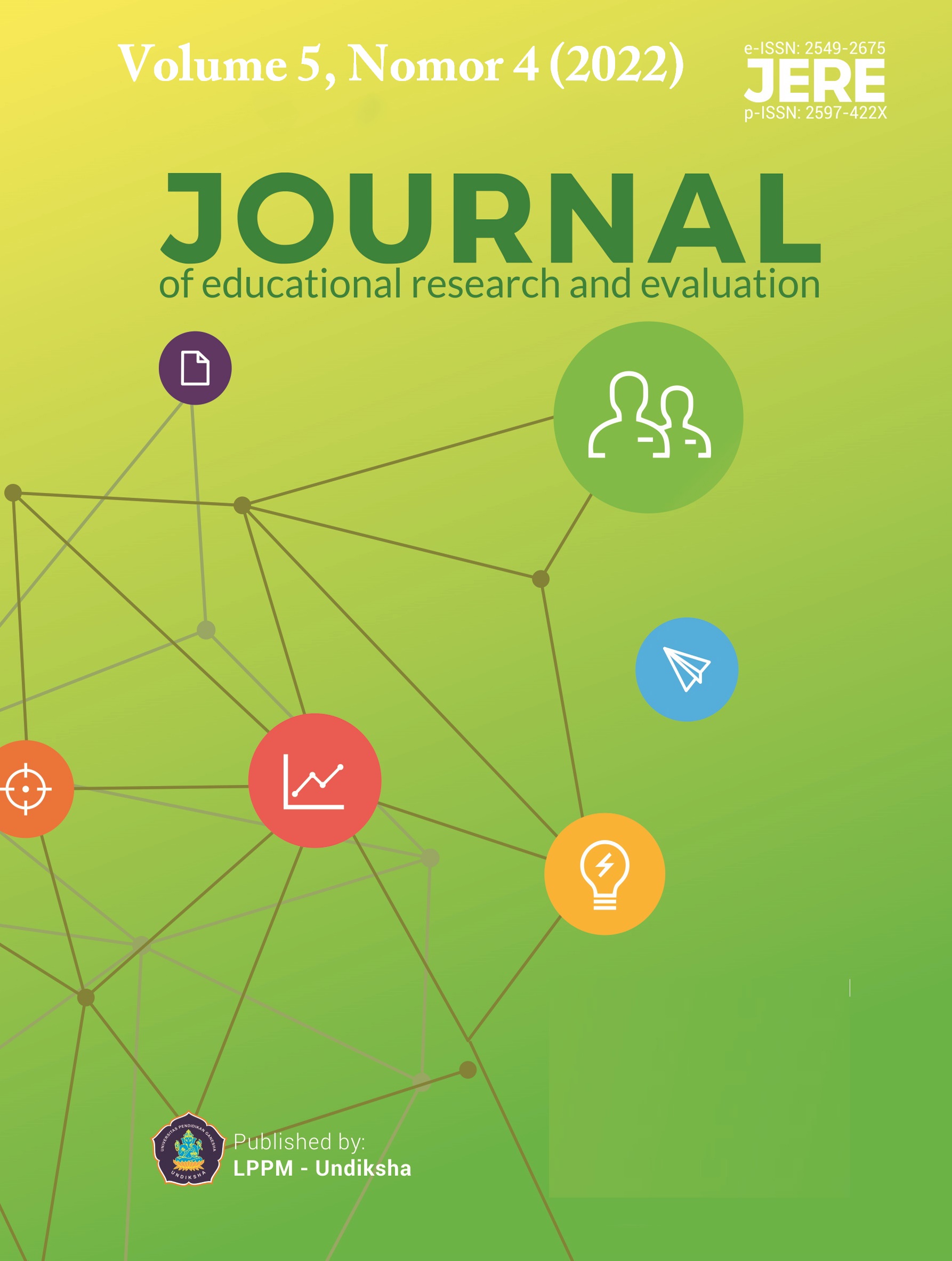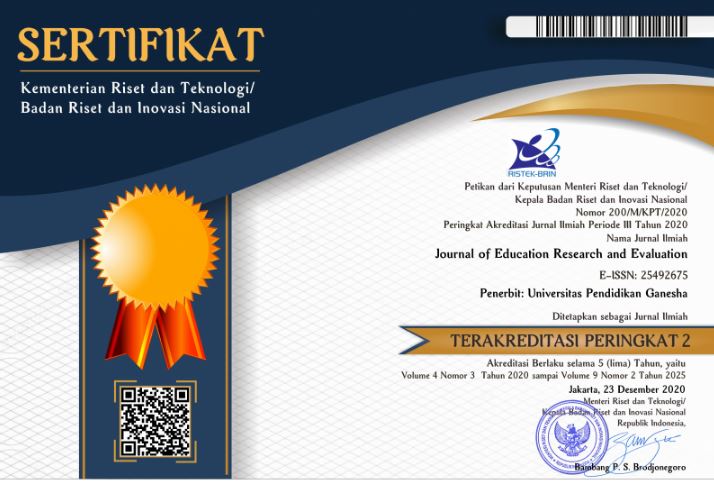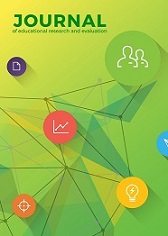Management of Educational Financing in Higher Education
DOI:
https://doi.org/10.23887/jere.v5i4.35434Keywords:
Perencanaan, Pelaksanaan, Pengawasan, APBN, APBDAbstract
Education is one of the long-term investments that has the ultimate goal of producing reliable, and competitive human resources at both the local and global levels. Educational development will be difficult to achieve if it is not supported by adequate funding. This study aims to analyze the planning, implementation and supervision of education costs from the APBN and APBD. This study uses a descriptive method with a qualitative approach. Data collection techniques in the form of interviews, observation and documentation. The subject of this research is the Head of the Planning and Information System Administration Bureau, the Head of the Planning Section, the Head of the Finance Section, the Head of the Program Planning and Budgeting/SP4 Preparation System Team, the Head of the Information System Section and the Head of the Quality Assurance Agency. The results of the study indicate that planning uses a bottom up pattern with SP4 from the lowest work unit to the university level, the implementation of the budget is used to finance expenditures sourced from the APBN and APBD. Control is carried out as the implementation of the controlling function in the preparation of the Performance Accountability Report for Government Agencies to assess financial performance, the Quality Assurance Agency for performance achievements from the quality aspect. Meanwhile, the supervision is carried out by the BPKP, Bawasda and the Inspectorate General of the Ministry of National Education. Financing management is an evaluation in improving the quality of education.
References
Abidin, A. A. (2017). Manajemen pembiayaan pendidikan tinggi dalam upaya peningkatan mutu (Studi kasus pada perguruan tinggi swasta menengah di Surabaya). Jurnal Penjaminan Mutu, 3(1), 87–99. https://doi.org//10.25078/jpm.v3i1.95.
Azhari, U. L., & Kurniady, D. A. (2016). Manajemen Pembiayaan Pendidikan, Fasilitas Pembelajaran, Dan Mutu Sekolah. Jurnal Administrasi Pendidikan, 23(2). https://doi.org/10.17509/jap.v23i2.5631.
Ekowati, T. E., Sunandar, S., & Murniati, N. A. N. (2020). Manajemen Pembiayaan Pendidikan Di Sekolah Dasar Islam Ar Rahmahkecamatan Suruh. Jurnal Manajemen Pendidikan (JMP), 9(1), 1–21. https://doi.org/10.26877/jmp.v9i1.6836.
Kurniady, D. A., Setiawati, L., & Nurlatifah, S. (2018). Manajemen Pembiayaan Pendidikan Terhadap Mutu Sekolah Menengah Kejuruan. Jurnal Penelitian Pendidikan, 17(3), 263–269. https://doi.org/10.17509/jpp.v17i3.9620.
Lengkong, S. M. K., Rotinsulu, D. C., & Walewangko, E. N. (2019). Pengaruh Alokasi Anggaran Pendidikan Dan Kesehatan Terhadap Indeks Pembangunan Manusia Dan Dampaknya Terhadap Pertumbuhan Ekonomi Kota Bitung. Jurnal Pembangunan Ekonomi Dan Keuangan Daerah, 19(2), 1–20. https://doi.org/10.35794/jpekd.15783.19.2.2017.
Lubis, R. R. (2021). Manajemen Pembiayaan Pendidikan dalam Meningkatkan Mutu Pendidikan di Madrasah Aliyah Imam Muslim Serdang Bedagai. Jurnal Agama Dan Pendidikan Islam, 13(1), 119–134. https://doi.org/10.30596%2Fintiqad.v13i1.6244.
Margareta, R., & Ismanto, B. (2017). Strategi Perencanaan Pembiayaan Sekolah dalam Peningkatan Mutu di SMP Negeri. Jurnal Manajemen Pendidikan, 4(2), 195–204. https://doi.org/10.24246/j.jk.2017.v4.i2.p195-204.
Masditou. (2017). Manajeman Pembiayaan Pendidikan Menuju Pendidikan yang Bermutu. Jurnal ANSIRU PAI, 1(2), 119–145. https://doi.org/10.30821/ansiru.v1i2.1518.
Murniati, AR, & Usman, N. (2015). Manajemen Pembiayaan pendidikan dalam Meningkatkan Mutu Pembelajaran pada MTsN Janarata Kecamatan Bandar Kabupaten Bener Meriah. Jurnal Administrasi Pendidikan : Program Pascasarjana Unsyiah, 3(4), 123–129. http://202.4.186.66/JAP/article/view/2598.
Mustopa, R., Barjah, M. K., Ahsaina, N. A., & Rais, Y. (2021). Pelatihan dan Pengembangan Manajemen Sumber Daya Manusia di Masa Pandemi Covid-19. Jurnal Sosial Dan Teknologi, 1(3), 166–174. https://doi.org/10.36418/jurnalsostech.v1i3.21.
Nurlaeli, A. (2020). Perencanaan Pembiayaan Berbasis Planning Programming Budgetting System (PPBS) di Sekolah Dasar Islam Terpadu Anni’mah Bandung. Jurnal Islamic Education Management, 5(1), 29–40. https://doi.org/10.15575/isema.v5i1.8912.
Prasetio, A. (2016). Manajemn Pemasaran,Analisis Perencanaan dan Pengendalian. Management Analysis Journal, 1(4).
Sari, M., & Masruroh, F. (2018). Pengaruh Motivasi Dan Disiplin Kerja Terhadap Kinerja Pegawai Di Kecamatan Magelang Tengah Kota Magelang. Jurnal Mahasiswa Administrasi Negara (JMAN), 02(02), 36–51.
Sonedi, S., Jamalie, Z., & Majeri, M. (2017). Manajemen Pembiayaan Pendidikan Bersumber dari Masyarakat. Fenomena, 9(1), 25. https://doi.org/10.21093/fj.v9i1.702.
Sudarso, A. P. (2017). Analisis Pengaruh Gaya Kepemimpinan Dan Insentif Terhadap Kinerja Karyawan Pada Yayasan Pendidikan Mulia Buana. JENIUS (Jurnal Ilmiah Manajemen Sumber Daya Manusia), 1(1). https://doi.org/10.32493/jjsdm.v1i1.659.
Sutrisno. (2018). Analisis Faktor-Faktor Yang Mempengaruhi Efektivitas Perencanaan Dan Penganggaran. REVITALISASI : Jurnal Ilmu Manajemen, 7(1), 107–111. https://doi.org/10.32503/revitalisasi.v7i1.789.
Usman, J. (2016). Urgensi Manajemen Pembiayaan Dalam Peningkatan Mutu Pendidikan Madrasah. TADRIS: Jurnal Pendidikan Islam, 11(2), 219. https://doi.org/10.19105/tadris.v11i2.1170.
Widiyono, A., & Irfana, S. (2021). Implementasi Merdeka Belajar melalui Kampus Mengajar Perintis di Sekolah Dasar. Metodik Didaktik : Jurnal Pendidikan Ke-SD-An, 16(2), 102–107. https://doi.org/10.17509/md.v16i2.30125.
Winarsih, sri. (2019). Kebijakan dan Implementasi Manajemen Pembiayaan dalam Meningkatkan Mutu Pendidikan di Sekolah. International Conference of Moslem Society, 1, 124–135. https://doi.org/10.24090/icms.2016.2409.
Downloads
Published
How to Cite
Issue
Section
License
Authors who publish with the Journal of Evaluation and Research in Education (JERE) agree to the following terms:
- Authors retain copyright and grant the journal the right of first publication with the work simultaneously licensed under a Creative Commons Attribution License (CC BY-SA 4.0) that allows others to share the work with an acknowledgment of the work's authorship and initial publication in this journal.
- Authors are able to enter into separate, additional contractual arrangements for the non-exclusive distribution of the journal's published version of the work (e.g., post it to an institutional repository or publish it in a book), with an acknowledgment of its initial publication in this journal.
- Authors are permitted and encouraged to post their work online (e.g., in institutional repositories or on their website) prior to and during the submission process, as it can lead to productive exchanges, as well as earlier and greater citation of published work. (See The Effect of Open Access)











